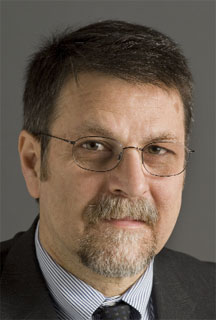As of January 1, 2012 Hasan Tuluy will be the World Bank’s Vice President for Latin America and the Caribbean
By Hasan Tuluy
Latin America and the Caribbean began 2011 on an economic high. After swiftly bouncing back from the 2008/2009 global crisis, the region grew at a record level in 2010 with some countries reaching East Asian rates of 8 to 10 percent— so fast in fact that early this year economists worried about overheating, additional currency appreciation, excessive consumer credit, and higher inflation pressures.

By year’s end, however, much had changed in the world with both European and US economies faltering. Suddenly the region was no longer at risk of becoming a victim of its own success, but a victim one more time of systemic failures in the industrialized world.
The region’s powerhouse, Brazil, is already feeling the pinch of the Euro-zone crisis. Its gross domestic product stopped growing in the third quarter of this year for the first time since 2009. More disconcerting in fact is that China, a major force behind Latin America’s recovery, may be showing signs of slowing down.
While it is still unclear how much the current Euro-zone debt crisis will impact the region, we are certain that, even if not in a dramatic way, it will be felt in the real economy through a credit crunch, trade losses, and some decline in commodity prices. While Latin America is still in a strong macro and financial position compared with other regions, at risk would be the hard-won social gains of this past decade: 60 million people lifted out of poverty and clear inroads against inequality. These need to be protected, and we are ready to help.
I am optimistic that the worst will be avoided. I got a sense –from recent interactions— that leaders in the region are unwilling to remain passive and accept an outcome resulting from outside distress. They know that the smart thing to do is to actively prepare for the worst, and hope for the best, while influencing the international agenda.
Regionally they are coordinating actions through UNASUR. Globally, the region’s exemplary performance of recent years has increased the political clout for Latin American leaders at the world stage.
Beginning in December, Mexico is taking over leadership of the Group of 20 (G-20) while Brazil, in turn, will host the United Nations Conference on Sustainable Development (RIO+20) next June, 20 years after the groundbreaking Earth Summit held in 1992.
Brazil too has said that it would be prepared to finance part of an IMF special fund to assist nations struggling to manage their debts. It was barely a decade ago when Brazil and many of its neighbors were those countries in trouble, seeking IMF funding.
Domestically, some countries are planning ahead by contracting flexible lines of credit or managing monetary policy and interest rates to provide an additional buffer if necessary.
Others are adopting fiscal stimulus, such as Peru’s US$500 million package announced in October. Peru’s stimulus is directed at local and regional public works projects as well as financing non-traditional exports. The advantage of these types of investments is that they not only help countries navigate the uncertainty, but also create the basis for the innovation and productivity that can allow them to emerge stronger in the post-crisis.
Whether it is through infrastructure investments or increased allocation of resources to those most vulnerable, the key is to be ready and ensure that the necessary mechanisms and institutions to implement counter-cyclical measures are in place when and if a shock hits.
While the hope is that another global recession will be avoided, the fact is that if it is not, Latin America and the Caribbean would be much worse without such preparations.
The region began 2011 facing its own challenges on how to sustain long-term growth rates higher than 5 per cent. It was clear that in order to move forward, countries needed to close productivity gaps by investing in infrastructure, innovation, and human capital through better quality of education and health services.
Paradoxically then, as the region switches gears to focus on outside threats, it may find the appropriate course of action rather similar. Counter-cyclical policies are largely congruent with good pro-growth measures. To be sure, some small countries, particularly in the Caribbean and Central America, have not had the robust growth of their neighbors, they lack shock absorption capacity, and would find it hard to do this type of investment.
But with the majority of countries in the region still reaping the benefits from the longest and most widespread commodity boom, chances are that they can continue to grow economically while also becoming more equitable socially.
As risk of default jolts other regions, it may be good to remember that the right set of policies, under the right set of visionary leaders, can sway fate.




